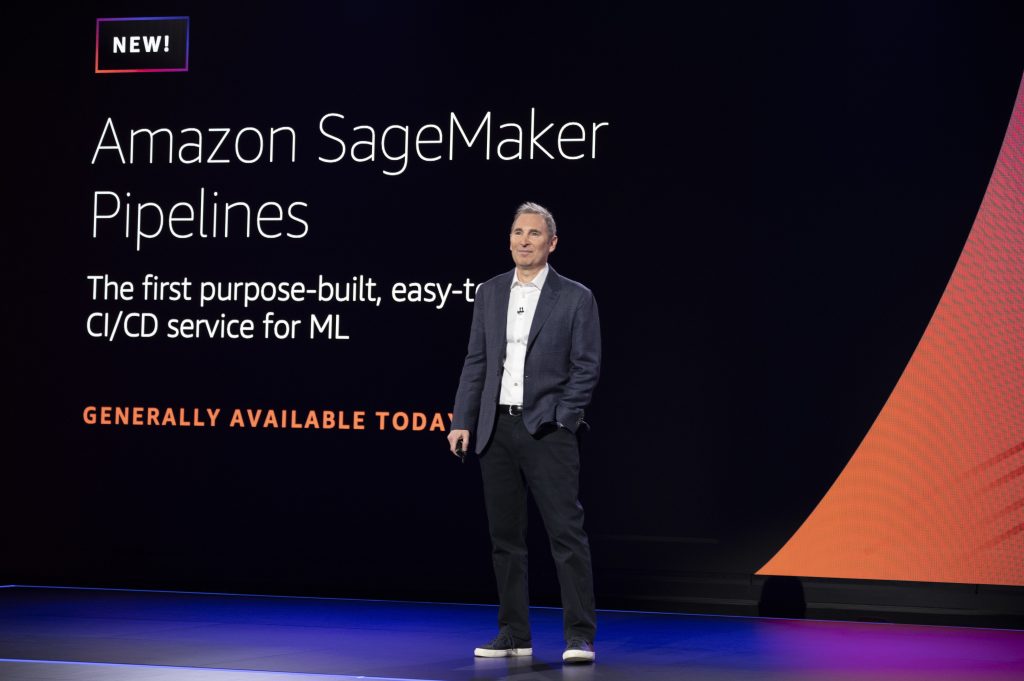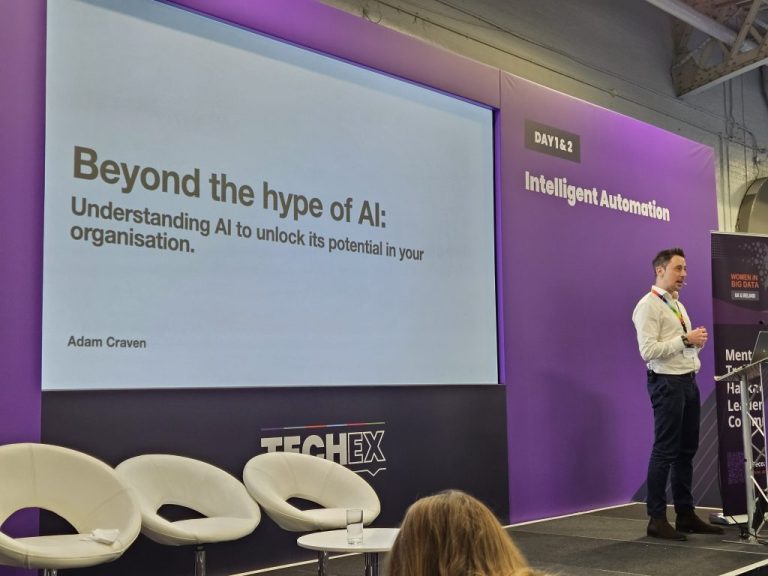AWS Unveils Nine Groundbreaking Updates to Enhance SageMaker’s Machine Learning Capabilities
Amazon Web Services Introduces Major Updates to SageMaker
Amazon Web Services (AWS) has unveiled nine significant updates for its cloud-based machine learning platform, SageMaker, aimed at simplifying the building, training, and deployment of machine learning (ML) models for a wide array of applications. These enhancements were announced during AWS’s annual re:Invent conference.
Swami Sivasubramanian, Vice President of Amazon Machine Learning at AWS, emphasized the platform’s extensive use among developers and data scientists, highlighting that customer feedback has been instrumental in shaping the new features. These updates are designed to facilitate the development of end-to-end machine learning pipelines, enhancing visibility, explainability, and automation while scaling.
Key Features Introduced
The first notable update is Data Wrangler, a tool that automates data preparation for machine learning. With Data Wrangler, users can easily select and import data from various sources in just one click. It includes over 300 built-in data transformers, allowing for the normalization, transformation, and combination of features without the necessity of writing code.
Frank Farrall, Principal of AI Ecosystems and Platforms Leader at Deloitte, remarked on how SageMaker Data Wrangler accelerates data preparation, enabling faster market launches and scaled deployments.
Another essential update is the Feature Store, which serves as a repository for storing, updating, retrieving, and sharing machine learning features for training and inference. By overcoming challenges related to feature storage across multiple models, it enhances collaboration among teams of developers and data scientists. Positioned within SageMaker Studio, it promises quick inference latency.
Mammad Zadeh, VP of Engineering at Intuit, expressed enthusiasm for the managed feature store, which aims to standardize and streamline the use of features across teams.
Next is SageMaker Pipelines, touted as the first user-friendly continuous integration and continuous delivery (CI/CD) service tailored for machine learning. It allows developers to outline every step in an ML workflow, from data loading to model optimization.
Finally, SageMaker Clarify has been introduced to enhance fairness and transparency in ML models by identifying bias throughout the machine learning process. This feature could prove crucial amid ongoing discussions regarding ethical AI practices.
Andreas Heyden, Executive VP of Digital Innovations for the DFL Group, noted the seamless integration of Amazon SageMaker Clarify, which adds significant value to the machine learning development process.
Integrating seamlessly with the Bundesliga Match Facts digital platform, this initiative plays a crucial role in our long-term strategy to standardize machine learning workflows on Amazon SageMaker. By leveraging AWS’s cutting-edge technologies, particularly in machine learning, we aim to provide viewers with deeper insights into the critical decisions made during matches. This enhanced perspective allows fans to better understand the split-second choices taken on the pitch.
One notable feature of Amazon SageMaker is Deep Profiling, which automatically monitors system resource utilization and offers alerts for any identified training bottlenecks. This tool is compatible with multiple frameworks including PyTorch, Apache MXNet, and TensorFlow, automatically collecting training and system metrics without requiring modifications to the training scripts.
Another significant capability is Distributed Training on SageMaker, which AWS claims can accelerate the training of large, intricate deep learning models by up to two times compared to existing methods. Kristóf Szalay, Chief Technology Officer at Turbine, states, “We utilize machine learning to refine our in silico human cell model, known as Simulated Cell, based on a proprietary network architecture. By effectively predicting molecular-level interventions, Simulated Cell aids in the discovery of new cancer drugs and finds companion therapies for existing treatments. Our training process is something we consistently refine, yet training on a single machine can take days, which slows down our iteration on new concepts. We’re thrilled about the potential of Distributed Training on Amazon SageMaker, as we anticipate a 90% reduction in our training times, allowing us to concentrate on developing a top-tier codebase for cell model training. Amazon SageMaker empowers us to enhance our efficiency in our primary goal: identifying and developing innovative cancer treatments for patients.”
SageMaker’s Data Parallelism engine is capable of scaling training jobs from a single GPU to hundreds or thousands, automatically distributing data across multiple GPUs and improving training efficiency by up to 40 percent. With the rapid advancements in edge computing, AWS is evolving alongside with the SageMaker Edge Manager. This tool assists developers in optimizing, securing, monitoring, and maintaining ML models deployed across fleets of edge devices. Edge Manager not only helps enhance ML models but also enables model cryptographic signing, facilitates uploading prediction data from devices to SageMaker for monitoring, and provides a dashboard for visual reporting on model performance within the SageMaker console.
Igor Bergman, Vice President of Cloud and Software for PCs and Smart Devices at Lenovo, comments, “SageMaker Edge Manager will significantly reduce the manual effort required to optimize, monitor, and continuously enhance models post-deployment. We expect our models to operate faster and utilize less memory compared to other machine learning platforms. As we expand AI to novel applications across Lenovo’s service portfolio, we require a high-performance, flexible, and scalable pipeline both in the cloud and across millions of edge devices. This is why we opted for the Amazon SageMaker platform. Its comprehensive edge-to-cloud and CI/CD workflow capabilities allow us to efficiently deploy our machine learning models in any device workflow, driving greater productivity.”
Lastly, SageMaker JumpStart aims to simplify the onboarding process for developers with limited experience in machine learning deployments. JumpStart offers a user-friendly, searchable interface to identify top-tier solutions, algorithms, and sample notebooks. Developers can choose from various end-to-end machine learning templates, such as fraud detection, customer churn prediction, and forecasting, deploying them directly to their SageMaker Studio environments.
Amazon SageMaker has introduced an impressive array of more than 50 new features in the past year. Following this extensive update, further changes may not be anticipated until we move beyond 2020. For more details on AWS’s cloud-related announcements, please explore our sister publication, CloudTech.
Interested in hearing discussions from industry leaders on similar topics? Attend the co-located 5G Expo, IoT Tech Expo, Blockchain Expo, AI & Big Data Expo, and Cyber Security & Cloud Expo World Series, with upcoming events in Silicon Valley, London, and Amsterdam.
NVIDIA is playing a pivotal role in positioning Germany at the forefront of Europe’s AI manufacturing sector. By providing cutting-edge technology and expertise, the company is helping to establish Germany as a leader in artificial intelligence within the continent.
In the realm of MedTech, advancements in AI hardware and clinical application programs are paving the way for revolutionary improvements in healthcare. These innovations are set to transform patient care and streamline workflows in medical settings.
However, the AI execution gap remains a pressing concern, with approximately 80% of AI projects failing to reach production. This highlights the significant challenges faced by organizations in successfully implementing AI solutions.
In the educational sector, teachers in England have been given approval to integrate AI into their classrooms, further enhancing the learning experience and preparing students for a future driven by technology.
Stay updated with the latest developments in technology by subscribing to our community for premium content and news delivered right to your inbox.
The significance of machine learning in fortifying cloud-native container security has garnered 42,438 views.
Artificial Intelligence, Finance, Logistics
Cutting-edge applications of machine learning are revolutionizing business operations, as seen in 14,392 views.
Applications, Artificial Intelligence, Face Recognition, Industries, Security
The utilization of AI and bots for fraudulent enhancement of music streaming has attracted 12,208 views.
Artificial Intelligence, Space
Collaborating with outsourced developers offers numerous benefits, with 10,405 views highlighting this topic.
See all
Latest
View All Latest
Education, Legislation & Government
Teachers in England are now permitted to integrate AI into their classrooms.
Artificial Intelligence, Sponsored Content
AI is rapidly influencing the cryptocurrency domain.
AGI, Artificial Intelligence, Companies, Development, Ethics & Society
Sam Altman from OpenAI suggests that we have entered the era of superintelligence.
Subscribe to receive all premium content and the latest updates in technology directly to your inbox.
Explore: About Us, Contact Us, Newsletter, Privacy Policy, Cookie Policy.
Reach Our Audience: Advertise, Post a Press Release.
Categories: Applications, Companies, Deep & Reinforcement Learning, Enterprise, Ethics & Society, Industries, Legislation & Government, Machine Learning, Privacy, Research, Robotics, Security, Surveillance, Sponsored Content.
Other Publications: Developer, IoT News, Edge Computing News, MarketingTech, CloudTech, The Block, Telecoms, Sustainability News, TechHQ, TechWire Asia.
AI News is part of TechForge.
For premium content and tech updates, subscribe to our newsletter.
The use of gform.initializeOnLoaded() is deprecated in the form editor context and will be removed in Gravity Forms 3.1. The previous method involves adding event listeners to determine when specific scripts are loaded and when the DOM is ready. This practice is no longer recommended.
To enhance the functionality of forms, Gravity Forms provides a wide array of hooks and actions. Developers can utilize gform.addAction() and gform.addFilter() to integrate custom functionality. These hooks enable the execution of functions at specific points in the form processing cycle.
For example, the following functions demonstrate how to implement custom actions and filters effectively. Using gform.doAction() allows for triggering actions, while gform.applyFilters() can modify behavior or output based on specified filters.
Form Fields
Fields in form submissions include:
- First Name (Required)
- Last Name (Required)
- Job Title (Required)
- Company Name (Required)
- Email (Required)
- Company Size (Required)
- Company Sector (Required)
- Country (Required)
Company Size Options
Options for the company size field include:
- 1-10
- 11-200
- 201-1000
- 1001-5000
- 5000+
Company Sector Options
Options for the company sector field include various industries:
- Biotechnology & Pharmaceuticals
- Computer Hardware & Electronics
- Consulting & Professional Services
- Defense & Security
- E-Commerce
- Education
- Energy, Chemicals & Utilities
- Engineering & Research
- Environmental
- Financial & Insurance Services
- Government
- Healthcare
- IT Services
- Manufacturing
- Media & Entertainment
- Not for Profit
- Real Estate & Construction
- Retail
- Software & Cloud Services
- Technology
- Telecommunications
- Transportation, Shipping & Logistics
- Travel & Hospitality
- Wholesale
- Other
Country Selection
The country field includes a comprehensive list, which caters to international submissions. Examples include:
- United Kingdom
- United States
- Canada
- Australia
- Germany
- France
- India
- Brazil
By submitting your email, you agree to our terms and privacy notice.







